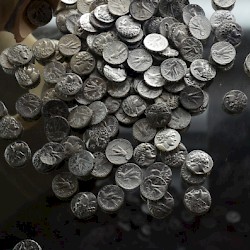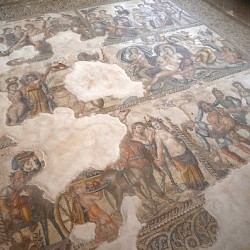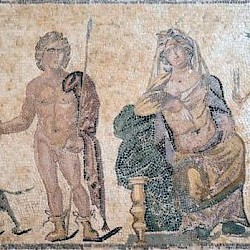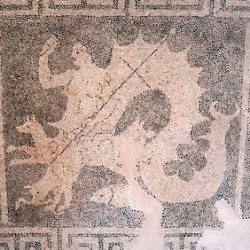New Paphos
Q64433741Paphos (Greek Πάφος): name of two cities in the southwest of Cyprus, the Archaic and Classical town (also known as Kouklia) and the Hellenistic and Roman city (which is still called Paphos).
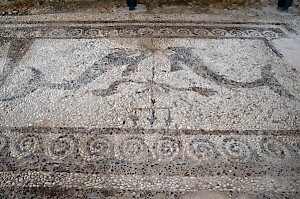
New Paphos was built in the last quarter of the fourth century BCE, by orders of king Nicocles, who realized the potential of the sheltered harbor. A founding myth was of course invented: the city was supposedly founded by Agenor, one of the heroes of the Trojan War, who on his return had, by storm, been driven to Cyprus. If there is a historical element in this story, it is that in the twelfth century BCE, Mycenaean Greeks did indeed come to the island.
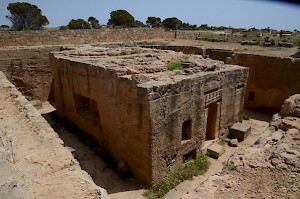
After Alexander’s conquests, Cyprus became part of the Ptolemaic Empire. The old city-states were brought under control of a governor, but the local king of Paphos retained his honorable function as high priest of the temple of Aphrodite in Old Paphos. The newly founded city of New Paphos became the residence of the governor. It was not only the administrative center of the island but also its main economic hub.
The so-called Royal Tombs date back to this age. (One of them actually contained the bones of a Ptolemaic ruler, the others are equally monumental but not meant for a royal person.)
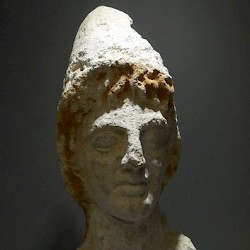 New Paphos, Head of Castor or Pollux |
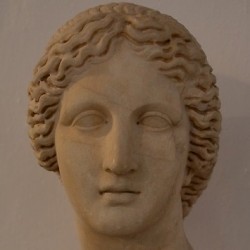 New Paphos, Head of Artemis |
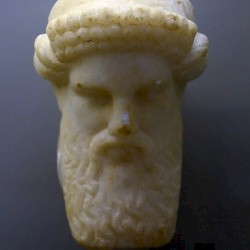 New Paphos, Hellenistic herm |
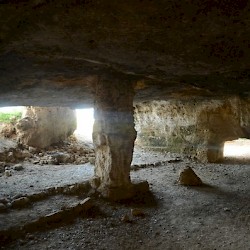 New Paphos, Acropolis, Quarry |
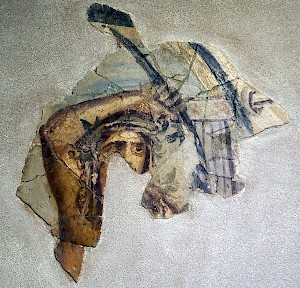
When the Romans conquered Cyprus, the Roman governor took over the residence. Paphos was the place where the apostle Paul was interrogated by the Roman official.
In the second and third centuries, New Paphos was a powerful city with imposing temples and large public buildings, such as an agora (marketplace), an amphitheater and an Asklepion (medical center). Beautiful mosaics have been excavated from this time.
A severe earthquake hit the city in the fourth century, which was destroyed and temporarily abandoned. Salamis was to be the new capital of the island.
The House of Theseus
The House of Theseus was probably the official palace of the Roman governor.
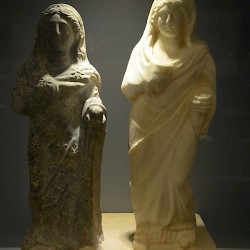 New Paphos, House of Theseus, celestial and earthly Aphrodite |
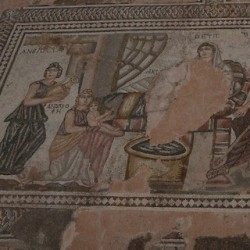 New Paphos, House of Theseus, Achilles Mosaic |
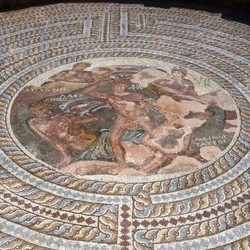 New Paphos, House of Theseus, Theseus Mosaic |
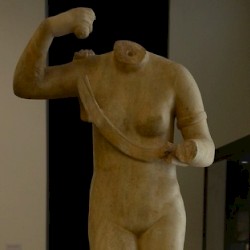 New Paphos, House of Theseus, Venus Victrix |
